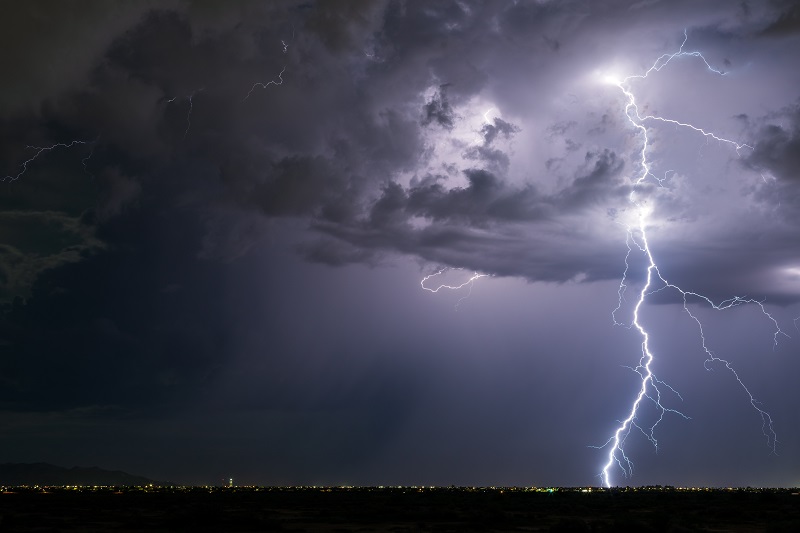Thunderstorms now a primary concern for insurers

Damage from secondary perils such as thunderstorms in the first half of 2023 is of primary concern to reinsurers.
A series of widespread thunderstorms hitting the U.S. accounted for 68% of global insured natural catastrophe losses in the first half of 2023, according to a report from Swiss Re. The reinsurer estimated global 2023 first-half NatCat losses reached US$50 billion, well above the 10-year average and the second-highest total since 2011.
“With severe thunderstorms as the main driver for above-average insured losses in the first half of 2023, this secondary peril becomes one of the dominant global drivers of insured losses,” says Martin Bertogg, head of catastrophe perils at Swiss Re. “The above-average losses reaffirm a 5% to 7% annual growth trend in insured losses, driven by a warming climate, but even more so by rapidly growing economic values in urbanized settings globally.”
In Canada, claims costs related to a severe weather storm in Nova Scotia are still being tallied. Some areas around Halifax were hit with two months’ (200 millimetres) worth of rain in just 24 hours. Some of the flooding damage happened in an area where wildfires had already caused $165 million in insured damage in May and June.
Also, claims counts are still coming in from a May 2023 storm that hit eastern Ontario and Quebec, causing severe flooding. Catastrophe Indices and Quantification Inc. (CatIQ) has already confirmed to Canadian Underwriter the eastern Ontario and Quebec storm in July will be Cat (more than at least $30 million in insured losses).
Related: Montreal-Barrhaven storm declared a Cat
Severe convective storms – storms associated with thunder, lightning, heavy rain, hail, strong winds and sudden temperature changes – caused US$35 billion (nearly 70%) in insured losses worldwide in the first half of 2023, Swiss Re reports. “This means that insured losses are almost twice as high in a six-month period as the annual average of the last 10 years [US$18.4 billion],” the reinsurer observes.
Swiss Re pins the increasingly extreme weather events on the effect of climate change, coupled with the higher concentrations of exposure in areas most affected by extreme weather events.
“The effects of climate change can already be seen in certain perils like heatwaves, droughts, floods, and extreme precipitation,” says Jérôme Jean Haegeli, Swiss Re’s group chief economist. “Besides the impact of climate change, land use planning in more exposed coastal and riverine areas, and urban sprawl into the wilderness, generate a hard-to-revert combination of high-value exposure in higher risk environments. Protective measures need to be taken for insurance products to remain economical for such properties at high risk. It is high time to invest in more climate adaption.”
Swiss Re has reported concerns about the global protection gap before. That’s the difference between the economic value of total damage caused by storms and the insured value of the damage. Insurance Bureau of Canada has flagged that in order to stay relevant, insurers need to work with governments to do what they can to close the gap.
IBC has indicated much of the flooding damage caused in the Halifax area in July wasn’t covered by insurance because it happened in high-flood risk areas. Canada’s federal budget this year committed funds to set up a national flood program for people living in high-risk areas.
Swiss Re’s study shows the total economic losses caused by natural weather catastrophes globally were US$120 billion, of which US$50 billion was insured damage. In other words, only 41.7% of global NatCat damage was insured.
A massive storm in Italy provides an extreme example of the impact of the protection gap.
“Heavy rainfalls in northern Italy’s Emilia-Romagna region in mid-May led to extensive flooding and expected insured losses over [US$600 million], the costliest weather-related event in the country since 1970,” Swiss Re notes. “Estimated economic losses were US$10 billion.
“With 94% of losses being uninsured in Italy, the important role of insurance as a means to close the protection gap and help households strengthen their financial resilience against natural catastrophes becomes obvious. Storm in northern Italy provided an extreme example of the protection gap.”
Feature image courtesy of iStock.com/mdesigner125







